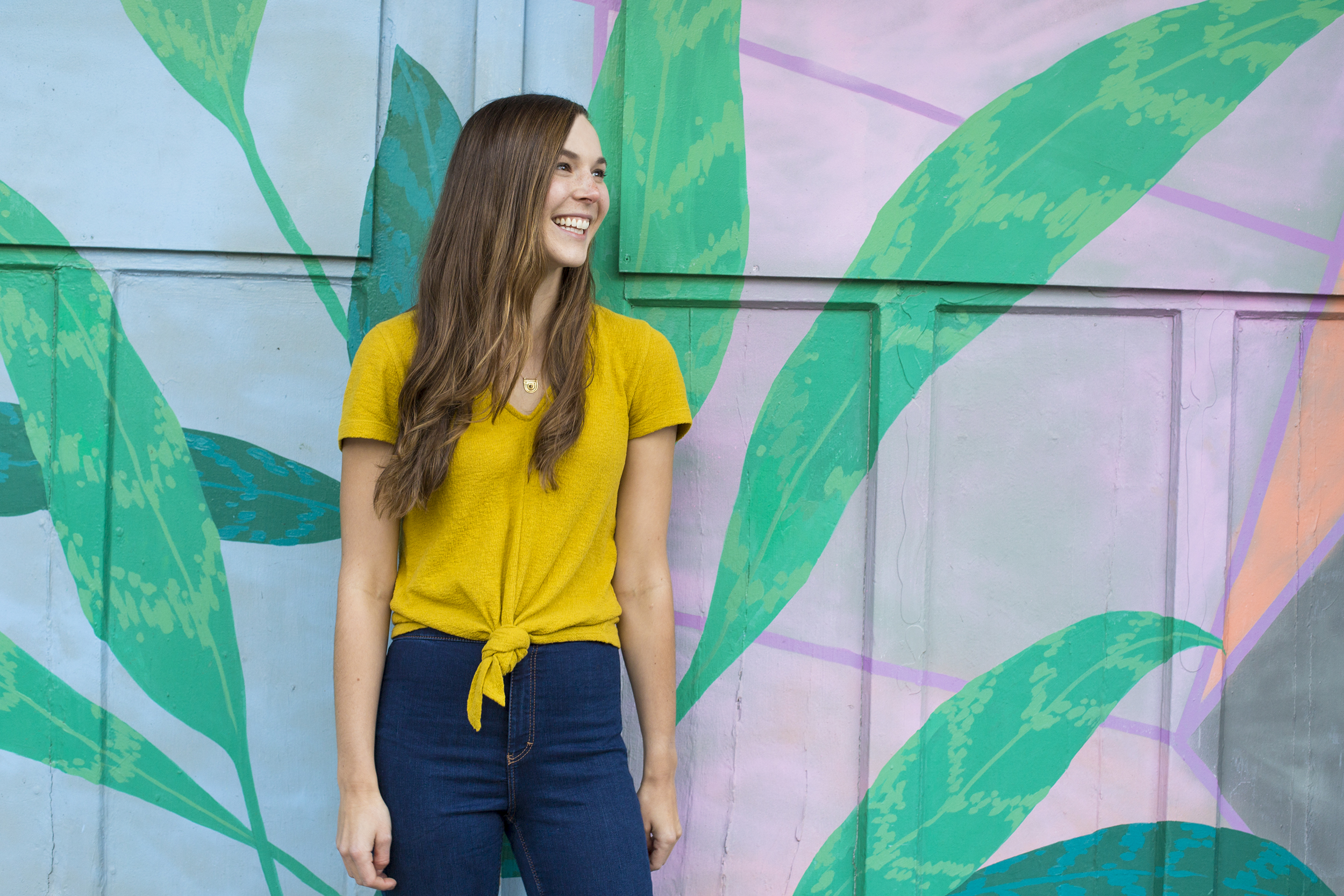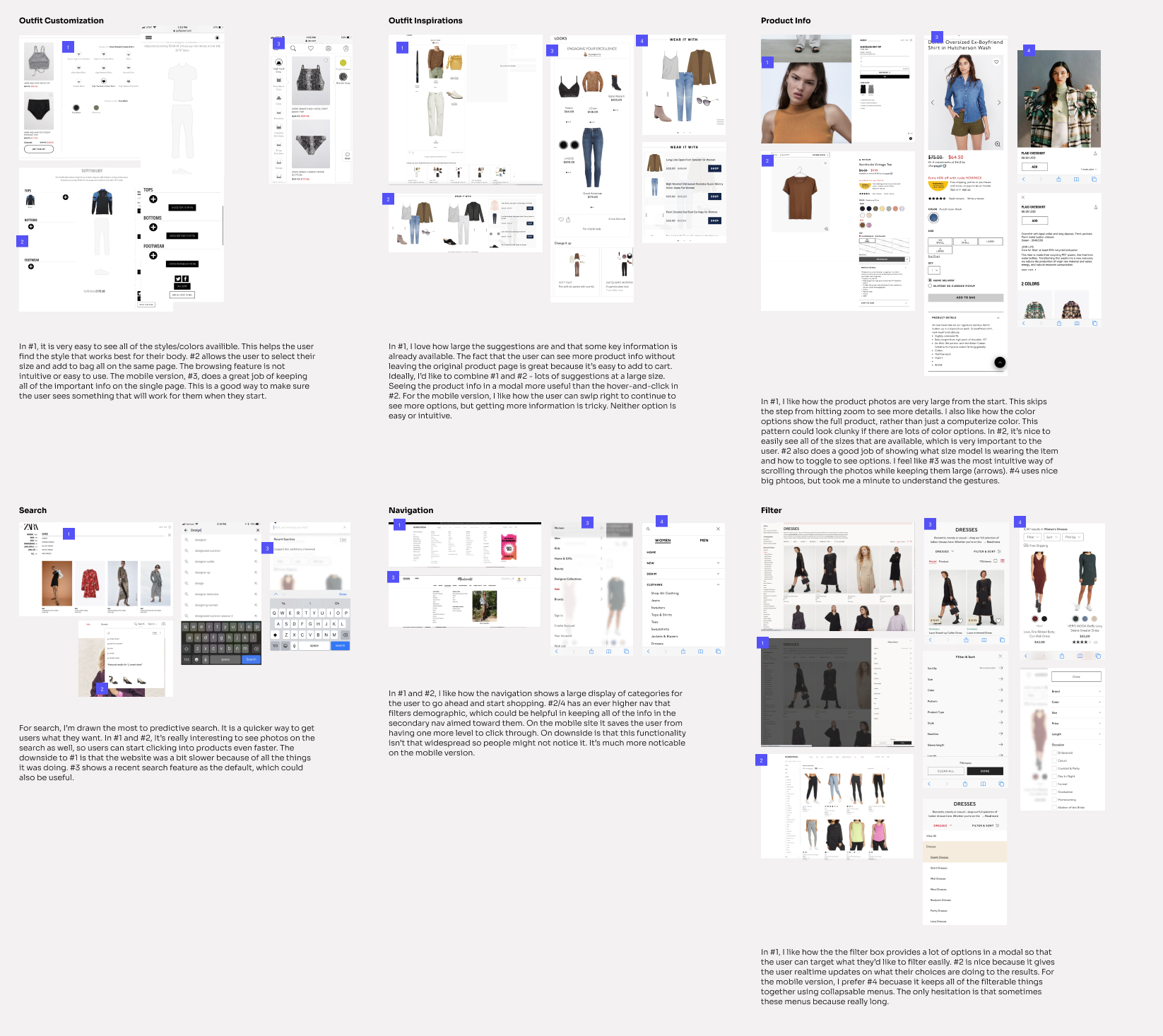The Plan
Analyzing retail competitors and 2020 ecommerce trends shapes the focus on the research so that the product solution is future-focused while meeting consumer needs. Designing Mirror from the ground up is an opportunity to innovate, so I conducted contextual inquiries to gain first-hand knowledge of clothing shopping habits. My goal is to create a responsive website that helps customers expand their wardrobe with trendy items by easily finding options that fit their preferences.
The Process
Research Focus areas
What is the current standard for sorting, filtering, and recommmending clothes among competitors?
How do men, women, and caregivers find clothes that match their style and figure?
What are the biggest pain points to shopping online?
And what makes the experience easy?
Market Research
I studied five of the biggest fast-fashion retailers and noted their strengths and weaknesses around providing inspiration for customers, allowing users to filter to find desired items, and how they personalize content (if at all).
Contextual Interviews
To dive into empathemic research, I reached out to five people of various ages – 25 to 65 – who shop for clothes online. Due to coronavirus, all interviews needed to be conducted remotely, so I had users share their screen while performing tasks.
Understanding the user & Finding Patterns
Time to synthesize the research while keeping a human-centered mindset, I created an empathy map to document high-level behaviors, goals, frustrations, and influences. Next up, a persona! This concisely outines user pains, frustrations, motivations, and needs.
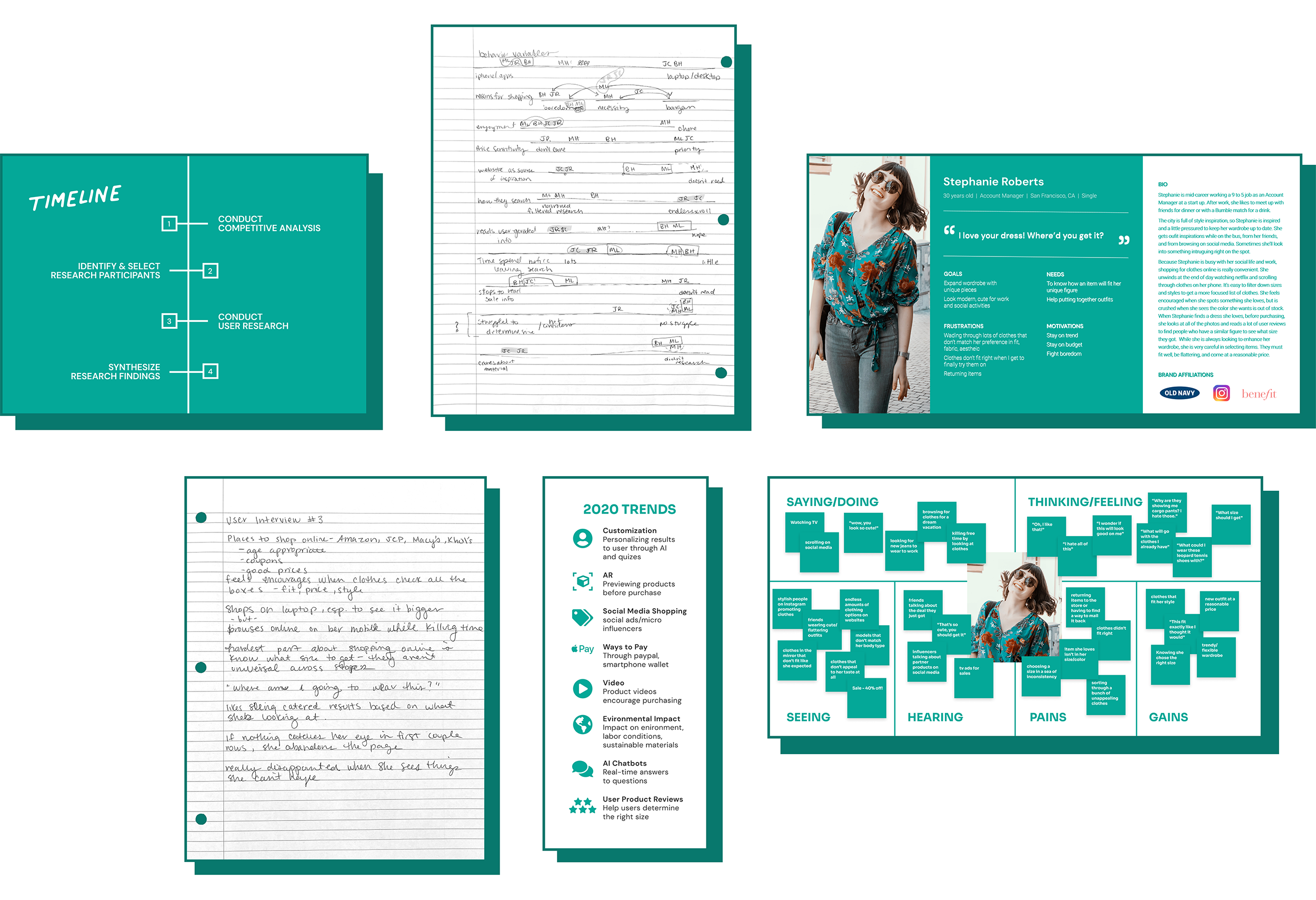
UX Challenges
Irrelvant Overload
On any site, shoppers are bombarded with hundreds of clothing options. Potential purchases are buried in a sea of unappealing colors, cuts, and fabrics, or worse, shoppers discover something they love, to only find out it’s not available in their size. This leads to quickly abandoned pages and feelings of disappointment and annoyance.
Style Assistance
Shoppers are curious and eager to try new trends. They need assistance purchasing fully styled outfits and pairing new items to fit in their current wardrobe, just like they can get in the store.
Unique Bodies
Customers feel like they have a body shape unique to them. Because of this, it’s hard to find clothes that fit them and determine what size to order. Because most users do not look like the photographed model, they rely on user generated content to help in choosing size.
UX Opportunities
From this research, it was clear that an online clothing retailer could do so much more to personalize the experience, inspire shoppers, and give them confidence in their purchases.
In the Flow
I started with the basic task flow to show the high level steps for shopping for clothes. I next developed a user flow that allows for outfit inspiration. The next user flow depicts an idea for customizing an outfit based on inspirational looks.
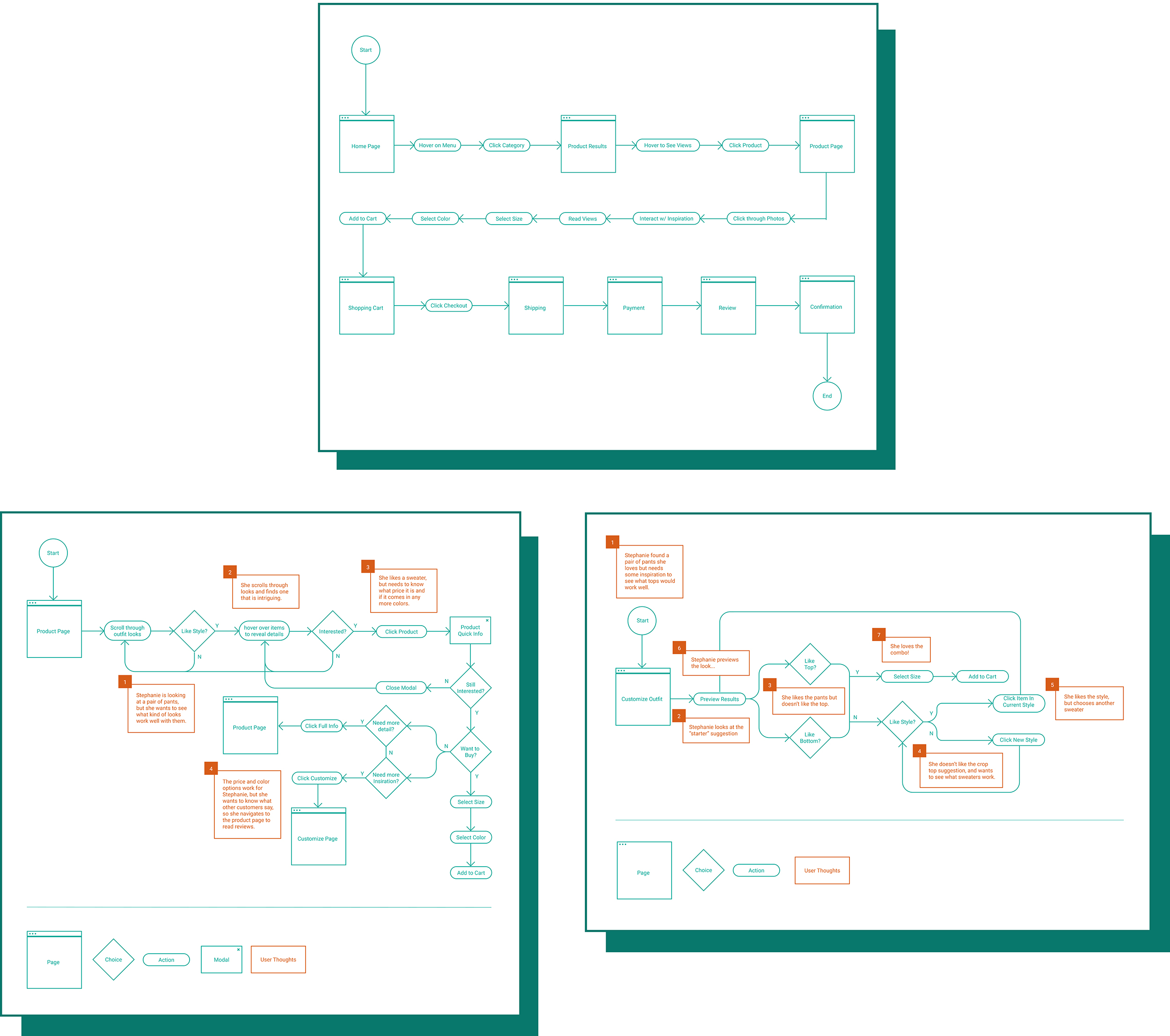
Best Practices
Before diving into wireframing, I researched the current standards for online shopping. I thought about the pros, cons, and areas for innovation for each design pattern, as well as what would make sense based on user research.
Exploration
Time for my favorite part – sketching! With the UX challenges in mind, I focused on generating solutions to inspire users with personalized outfit suggestions and customizing outfits to test new trends for the homepage, product page, and outfit builder page.
Then, on to low fidelity wireframes for prototype testing.
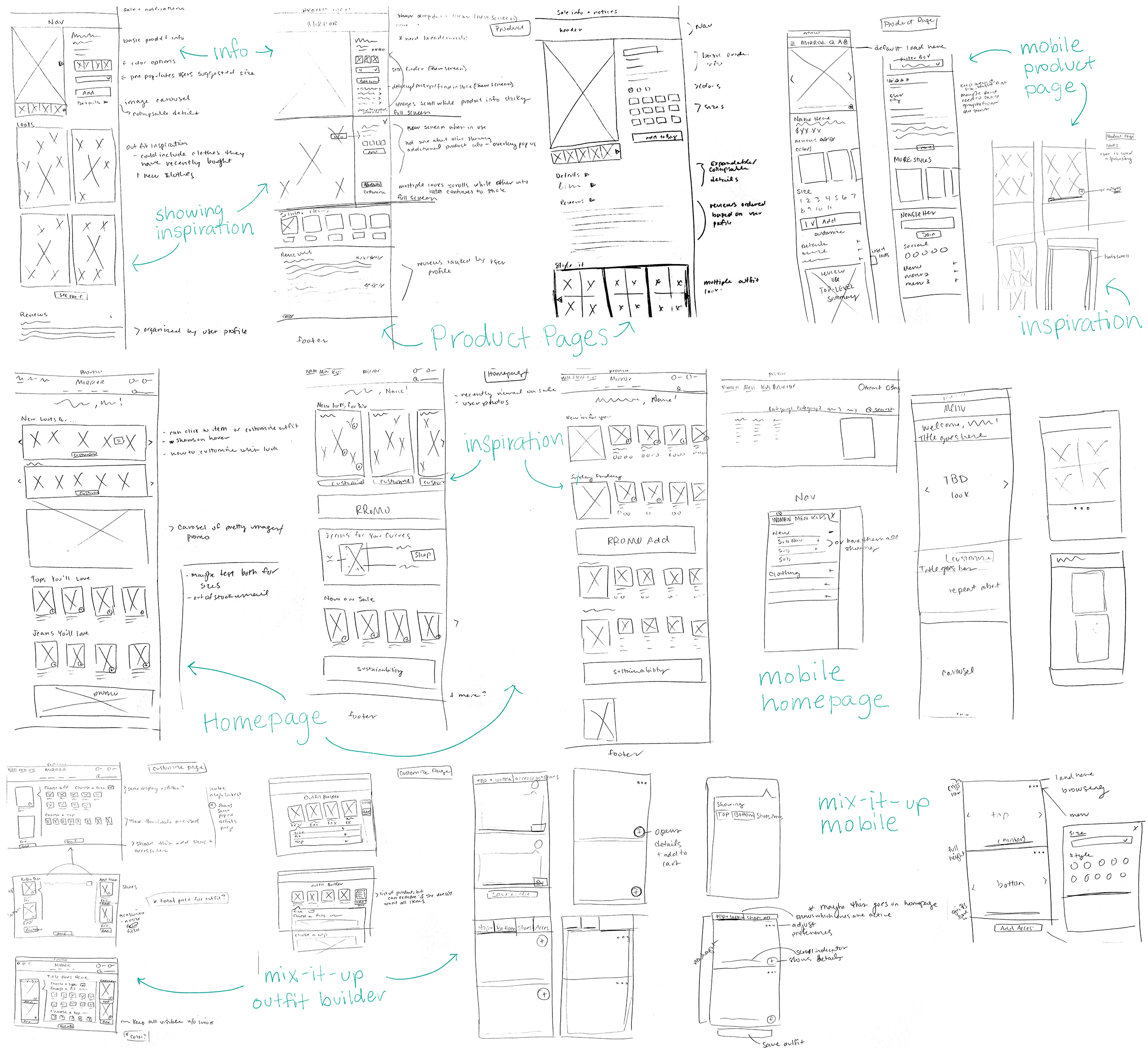
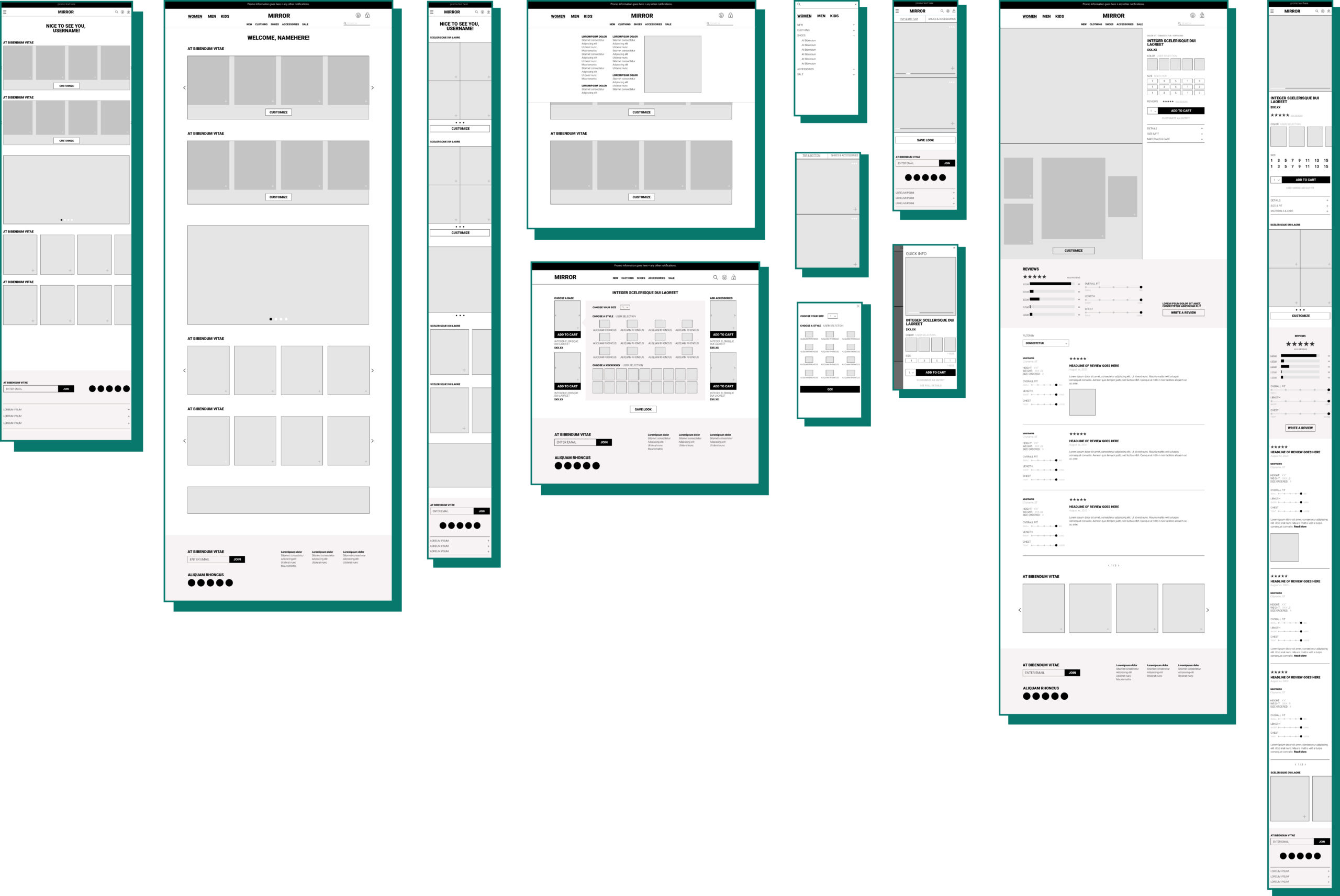
The Solutions
The following solutions help users like Stephanie. Whether they are shopping with a purpose or just boredom browsing, users want to effortlessly find trendy clothes that fit their taste and unqiue body.

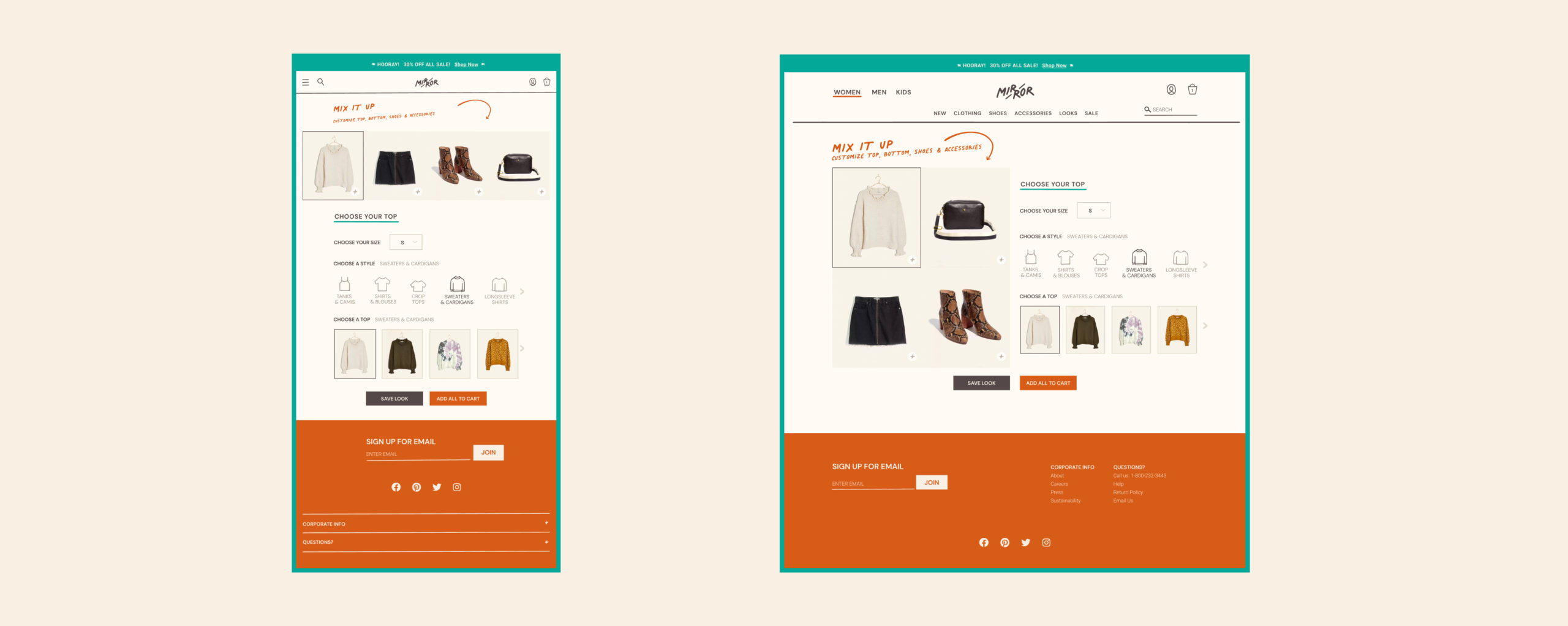

Testing & Iteration
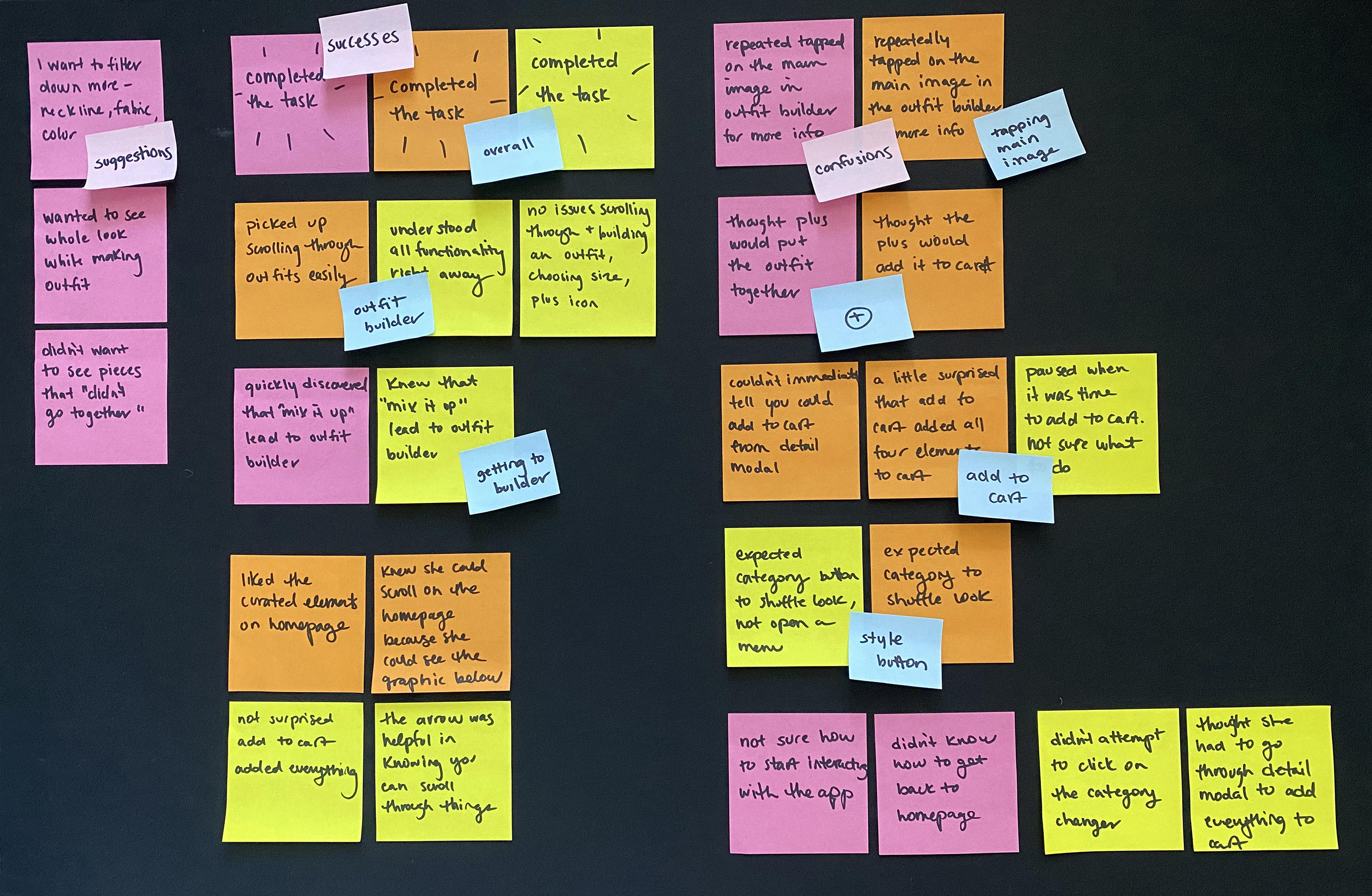
Affinity mapping the results from the testing to identify patterns
The first round of Mix It Up vs. the new one after testing
Next Steps
2020 seemed like a good year to bring in Augmented Reality for clothes shopping. With more and more people shopping only online due to Covid-19, it’s the perfect time to improve user ability to “try things on” remotely. Due to time and technology constraints, I wasn’t able to pursue this idea yet.



